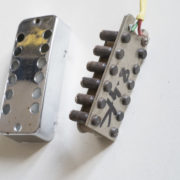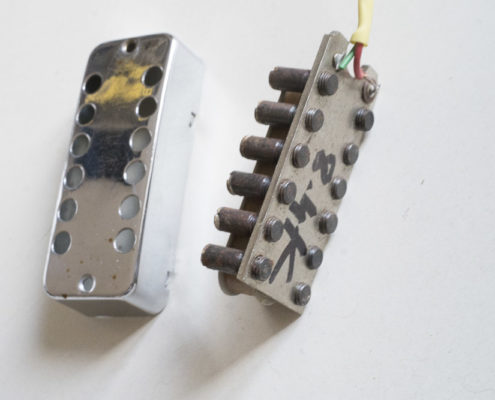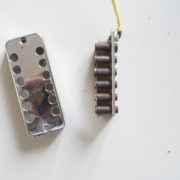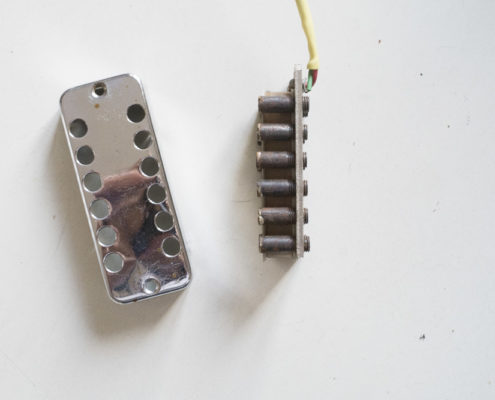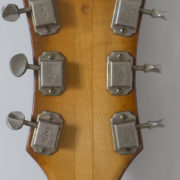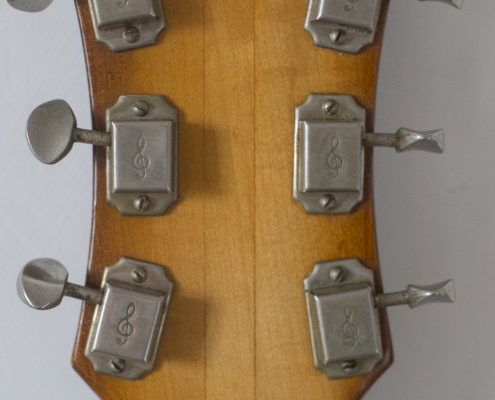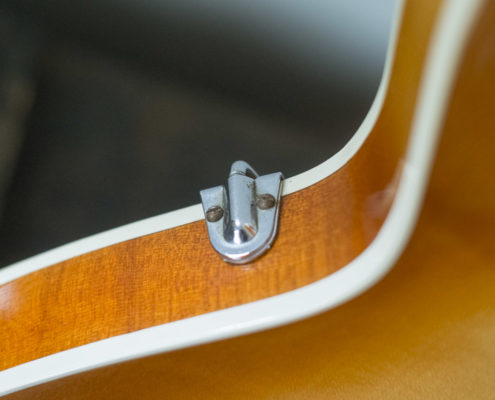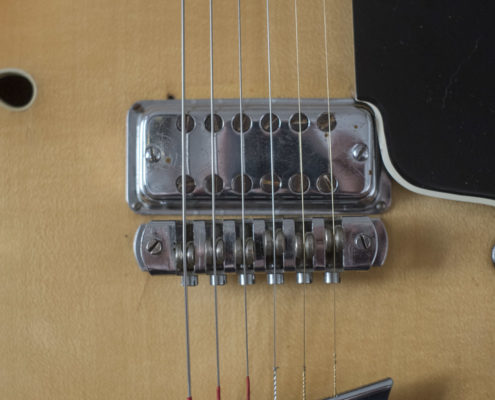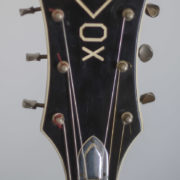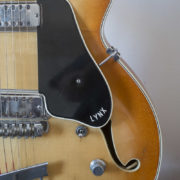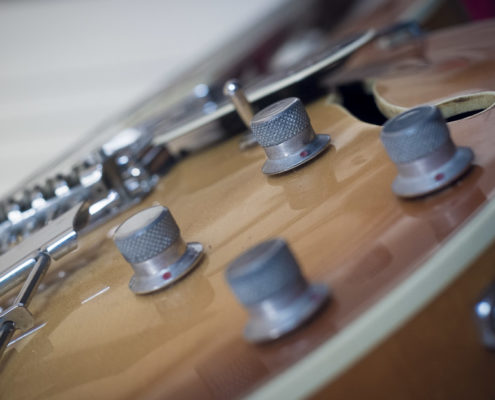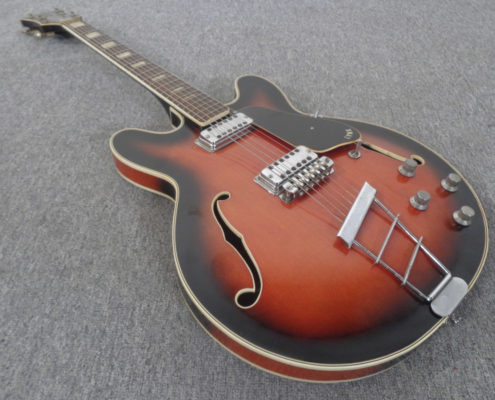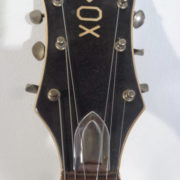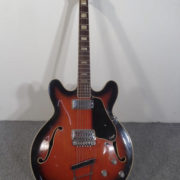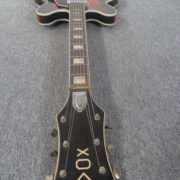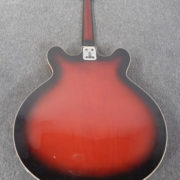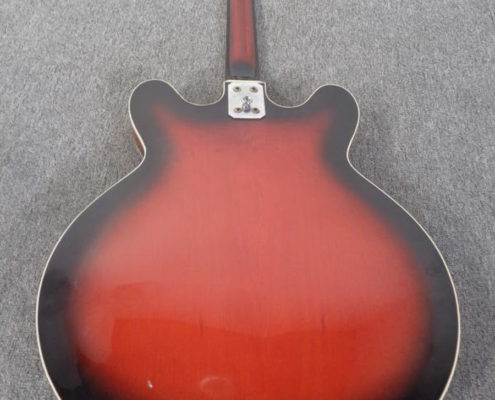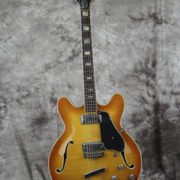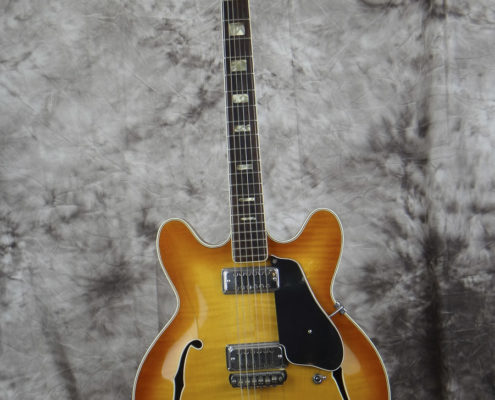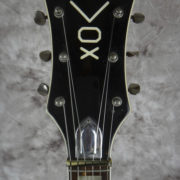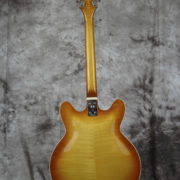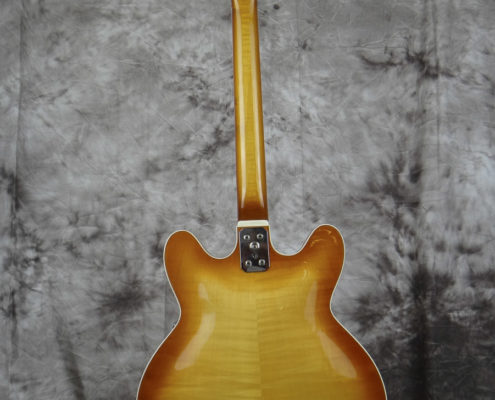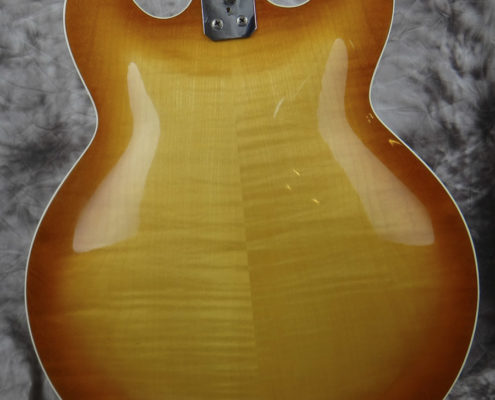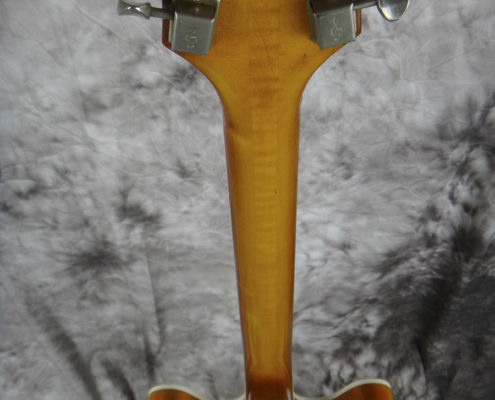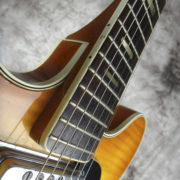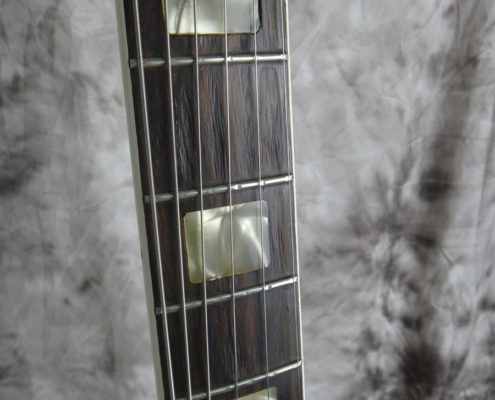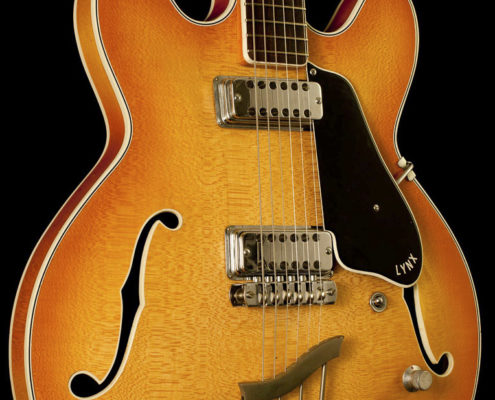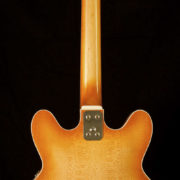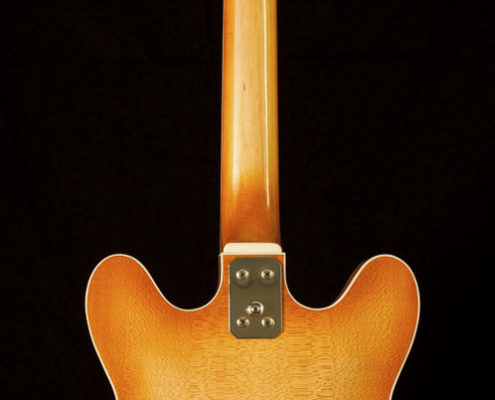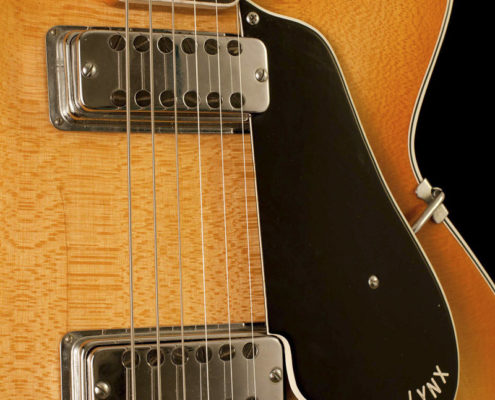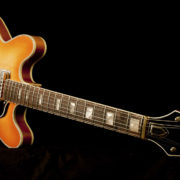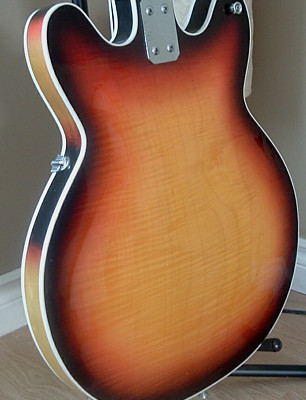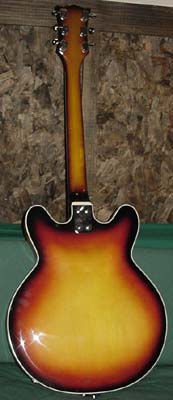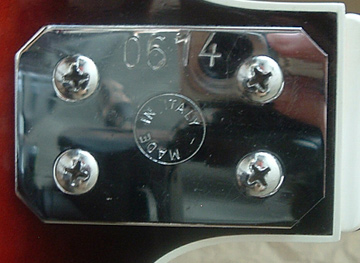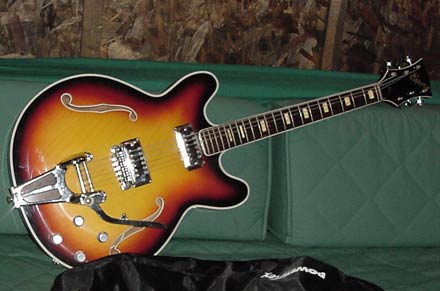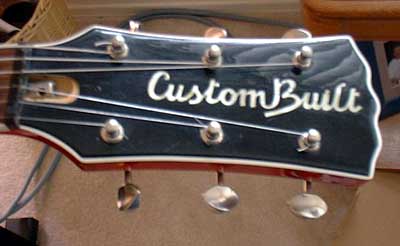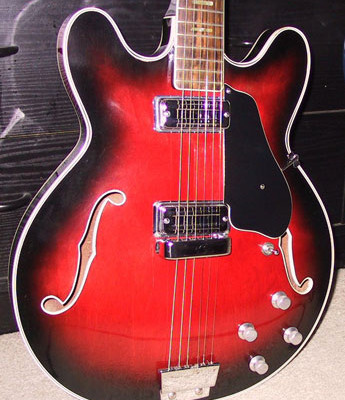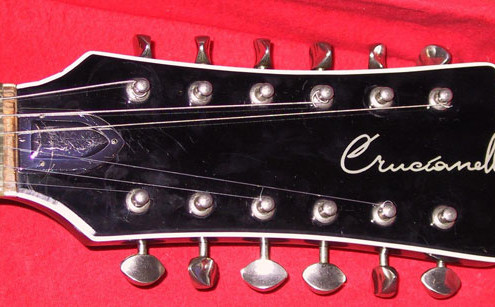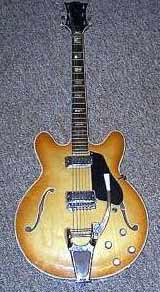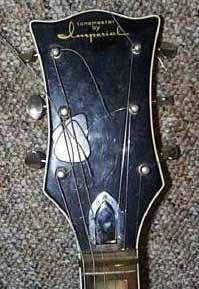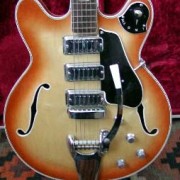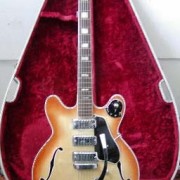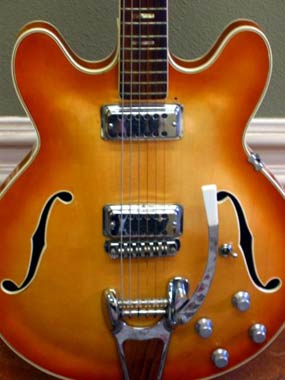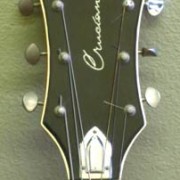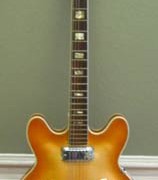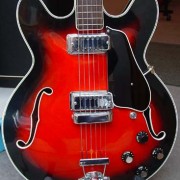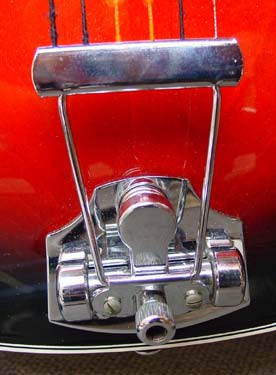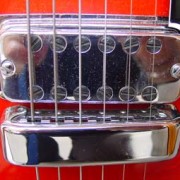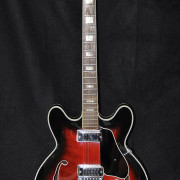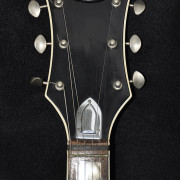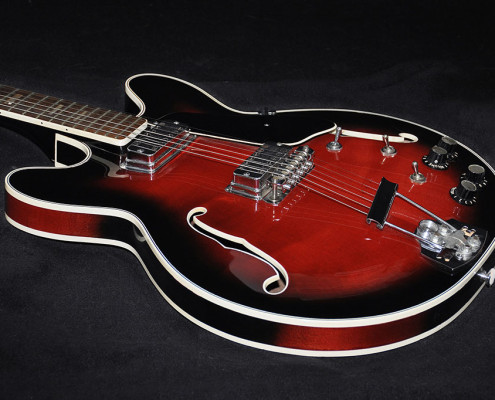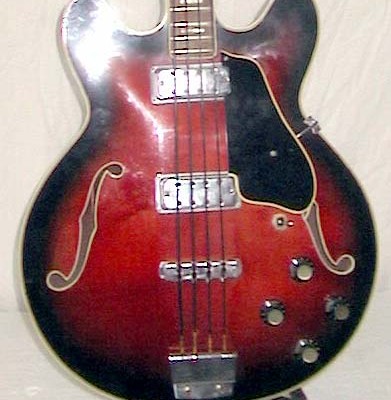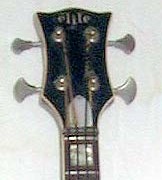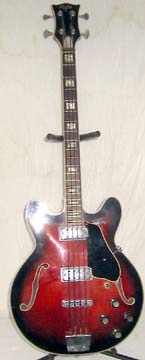Tutta originale (salvo la leva vibrato che ha perso il suo capuccio in plastica bianca). Magnifica finitura cherry, binding bianco su tutti i bordi, anche sulle buche a effe delicatamente cesellate. Elegantissima.
España era un marchio usato da un’azienda di New York, Buegeleisen & Jacobson, che importava strumenti costruiti oltre-oceano secondo le sue specifiche (oppure rispondendo ad esse) e rivenduti a diversi grossisti o distributori nord-americani. Posizionata come era la B&J non si impegnava ne nella fabbricazione ne della garanzia post-vendita, si limitava a comprare e rivendere. Il suo successo era fondato su una lunga reputazione (la ditta era stata creata nel 1901, più o meno), una gamma di prodotti selezionati con cura, e un’abile politica marketing centrata su alcuni marchi proprii.
Per le chitarre elettriche, quelle di origine nipponica erano divise fra i brands Winston (strumenti economici) e Kent (qualità da media a piuttosto buona), poco importava chi fosse il vero produttore (Guyatone, Teisco, Kawai…).
Le chitarre europee erano radunate sotto il marchio España, inizialmente impiegato negli anni 1961-67 per le chitarre classiche di fabbricazione svedese fornite da Hagström (per saperne di più). B&J e Hagström erano partner già nel 1932, allorchè Hagström cominciava a produrre fisarmoniche e a preoccuparsi di esportare in USA.
La denominazione España era chiaramente una risposta alla ditta Hershman Musical Instruments, anch’essa di New York, che allora si godeva un gran successo con le chitarre acustiche fatte a Göteborg da Herman Carlsson AB (alias Levin) e vendute in USA con il nome pseudo-spagnolo Goya. B&J approfittò della buonissima fama che esse avevano dato alle chitarre svedesi, e scelse per le sue un nome ancora più iberico. Le vendite furono subito floride, e presto B&J si dovette lamentare di non averne abbastanza per soddisfare la domanda, perciò strumenti dalla Finlandia furono reclutati per rinforzare il capitolo España del catalogo B&J. Non c’è dubbio che Hagström aiutò a stabilire la relazione con questa fonte supplementare.
Nella seconda meta del decennio il marchio España venne anche dato da Buegeleisen & Jacobson a copie ES-335 fatte in Italia (da Crucianelli) e in Finlandia, quest’ulltime erano distinte dal manico incollato e da un logo a forma di corona. A parte questo, le due linee erano assai simili. Non si sa tra le forniture finniche e quelle italiane quali furono le prime importate in USA. Le elettriche España finlandesi prevalgono nei cataloghi e nella pubblicità B&J, ma sul mercato del vintage le versioni Crucianelli sono almeno sei volte più numerose delle altre. In termini di specifiche non si nota la minima differenza tra quelle marcate Élite, Crucianelli o Tonemaster.



